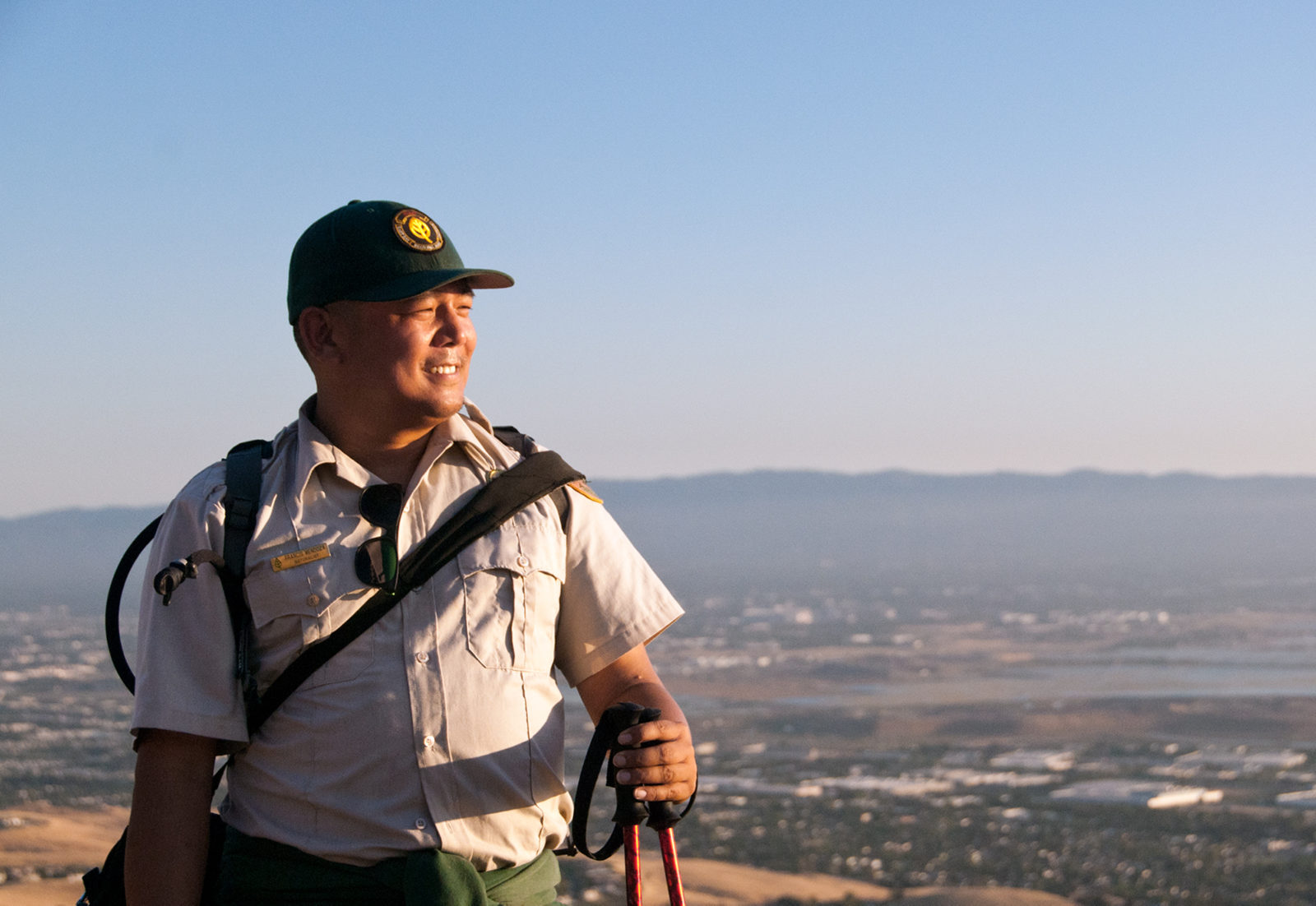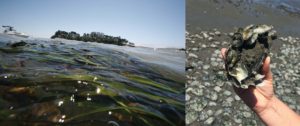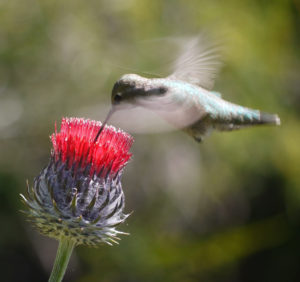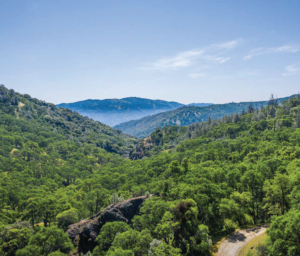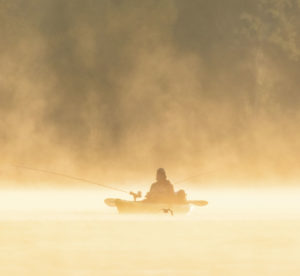ecause this story is about parks, and parks are, in part, about the people who visit them and treasure them, this story begins with our society, the way it is changing, and the direction it is headed. Start 26 years in the future: the Bay Area in 2040, a reasonable target for the retirement party of a current early-career park supervisor. What do you plan for? Silicon Valley churning out brain-implant devices and 3D-printed clothes; a foodie landscape of engineered nutritional drinks; a solar-powered transit utopia? Or trends easier to predict: 2.1 million additional residents facing environmental challenges like rising sea level and threats to shoreline infrastructure, increasingly dense urban areas, and intensifying development in the suburbs?
That’s the challenge for the modern generation of East Bay Regional Park District staffers, such as Francis Mendoza, Sergio Huerta, Akin Lee, Jose Cabrera, Kate Collins, and Ashley Elliott. Their employer, one of the largest landowners in the Bay Area and recreation destination for millions of Bay Area residents each year, sits at the nexus of societal and environmental change. It acquires and manages land next to cities like Oakland, Fremont, and Richmond and in suburbs like Clayton and Sunol. It restores and manages parks along the shores of San Francisco Bay, where sea level rise looms. It needs to convey the value of parks to a more diverse and more tech-savvy audience than ever before. It has to engage citizens who hold the future of park funding and land protection in their hands. That engagement falls not just to the park’s current leadership, but to those who are working in the field today and will be leading the district when 2040 rolls around.
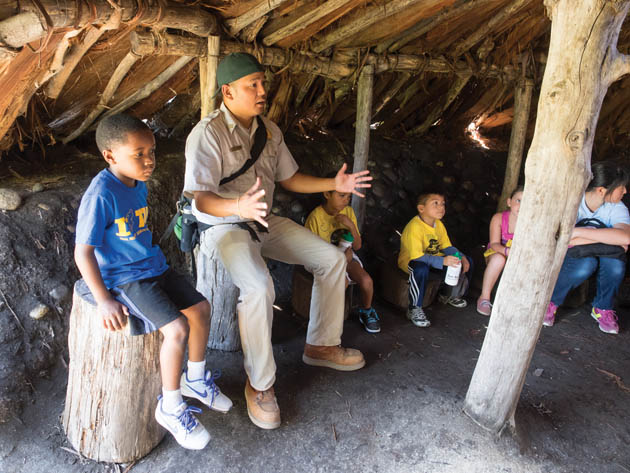
oday, though, Francis Mendoza is thinking about the past. Mendoza, 38, an EBRPD interpretive naturalist, is at Mission Peak Regional Preserve in Fremont, leading a group of four women and one sixth-grade boy on a twilight hike up the 2,517-foot peak. From the lookout point where they’re taking a break you can see “where the South Bay meets the East Bay,” Mendoza says: Coyote Hills Regional Park, the Dumbarton Bridge, the salt ponds and the Santa Cruz Mountains, the Oakland skyline peeking out from the fog. “I like looking at the expanse of the Bay and thinking about what it looked like in the olden days,” he says.
A Fremont native working primarily at Coyote Hills, Mendoza draws on a background as a social worker for troubled youth and combines it with a love of nature, making him an ideal interpreter of cultural and technological trends for a district celebrating its 80th year.
The EBRPD has become known for fostering long-term employees, but the baby boomers who were hired during the district’s major expansion years of the 1970s are retiring. Robert Doyle, the EBRPD general manager and a product of that generation of hires himself, says about 75 percent of those at the senior management level have retired in the last five years. “As much as there’s huge change going on here with a vast amount of knowledge going out the door,” he says, “I think the new energy, new ideas, and diversity slowly coming into the district is very exciting.”
The parks remain full of traditional users: nature lovers, joggers, horseback riders, and dog walkers. But now they’re joined by those documenting their finds with naturalist apps and meeting up for events through social media, as well by those Mendoza calls “the selfie groups.” At the top of Mission Peak, the selfie groups are out in full force. They do victory dances to music playing from their iPhones and huddle together for group photos. Others clamber up the iconic old directional monument to take pictures and videos. One young man walking down the hill talks to a friend with FaceTime. “I come here every day,” he shouts at the screen, the wind carrying his voice away.
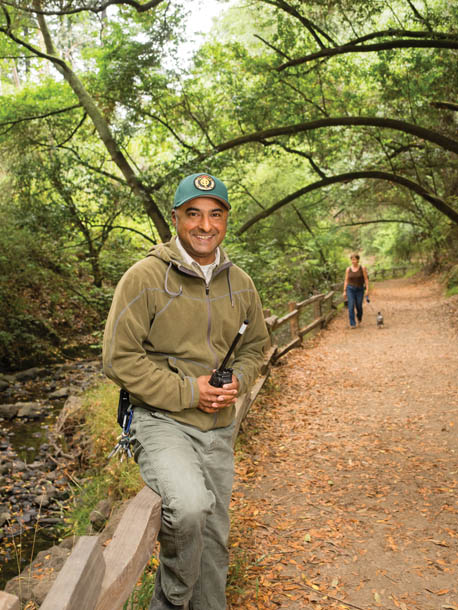
nce upon a time, going into nature meant leaving gadgets at home, and it’s still that way in some of the open spaces. Up in the hills at Tilden Regional Park, cell reception can be so poor that using a smartphone isn’t an option. That’s just fine by park supervisor Sergio Huerta. “It’s not that we’re opposed to technology,” he says. “Just that, being off the grid, we enjoy the fact that we’re not linked in. When you come to the park, it’s time to turn off devices and just experience the natural features of the park.”
Huerta came on with the park district as a temporary employee at Tilden in 1990 and “immediately fell in love with the East Bay hills,” he says. He was formally hired in 1991 and went from the roads and trails crew to becoming a supervisor, spending time all over the district, from Tilden to Point Pinole to the campgrounds at Anthony Chabot to the East Contra Costa trails, while also serving on the district’s firefighting team. Two years ago, Huerta was brought back to Tilden. “Back to where I want to be,” he says.
Tilden is a haven for those who want to detox from the wired world: Even GPS is unreliable there. “We definitely get great feedback from people who come here and say it’s a refuge for them,” Huerta says. “It’s a spiritual place, a place where people have so many fond memories, and being entrusted to take care of it is really an honor.”
But those tech refuges are becoming increasingly rare, as Mission Peak and many other locations demonstrate. “The reality is, more than likely, soon everyone will have their smartphone,” says Anne Kassebaum, EBRPD’s chief of interpretive and recreation services. “So the question becomes, how can we use that as a complement to what’s going on outdoors?”
The EBRPD has naturalists and staff from public affairs, recreation, planning, and public safety generating posts for their various social media accounts. Visitors can scan QR codes on info panels at Lake Chabot in the Oakland hills and along an interpretive walk at Crab Cove in Alameda. The district supports a number of web and mobile apps, too, including ones to help people find activities at different parks and information about trail safety. There’s an app for an annual Trails Challenge that helps users track hikes they’ve completed, and a Trailsafe app that provides safety tips, phone numbers, and a way for users to “check in” with friends and family.
Mendoza is one of the district’s most active employees online, snapping photos of wildlife and program attendees for his personal accounts and for the district. The district has more than 8,600 Twitter followers (@ebrpd), 841 Instagram followers, and 29,000 photos from 1,400 followers in its “EBRPD Official Fans” Flickr group. Mendoza’s personal account on his social media platform of choice, Instagram, has more than 400 followers. (He’s @roving_ranger.)
Social media has enticed new visitors into the parks. But increased use means increased wear: fences and rocks tagged with Instagram handles, “bootleg” trails, trash, graffiti, and noise pollution. It’s great to see so many people in the parks, Mendoza says, especially young people, but there’s a downside. “We want them to love the parks, but not love them to death,” he says. Mission Peak, which has seen exponential increases in park visitors (it’s been tagged on Instagram 83,000 times and counting) over the past several years, is one such example, and the district has started outreach efforts and ramped up enforcement of the existing nighttime curfew to try and minimize damage to the park’s resources and preserve its natural beauty.
With rosy cheeks and a youthful grin, Mendoza has the approachable look of a camp counselor, but he can certainly get serious when it comes to protecting open spaces. When two girls start jogging up a hill off-trail, he calls out, “Down! You can’t go that way.” The girls pause, confused, and he has to call out to them once more before they head back down to the path.
Certainly, some of the visitors have a contradictory relationship with nature, Mendoza says, but he also sees people use their phones to post beautiful nature photos, consult bird-tracking apps like eBird, and gather info about plant and wildlife species during bioblitzes. He counts the River Otter Ecology Project, with its Facebook page for posting otter sightings, as a huge tech success. “It’s not feasible to have scientists who work with river otters going all over looking for river otters,” he points out. “Instead, we can teach citizen scientists about the apps so they can contribute.”
The digital world is omnipresent in the activity on Mission Peak, but fundamentally the visitors are all just people in nature. A woman in the group comments, “Could this be more exemplary of the Bay Area? Young, old, every race and grouping, couples and singles.” A guy with tattoos and a 49ers backpack charges up the hill with speakers blasting hip-hop, Spanish-speaking friends stop to say hello as they pass each other on the trail, preteens hike alongside their parents, and a group of young men in matching white T-shirts make their way slowly up the trail toward the peak.
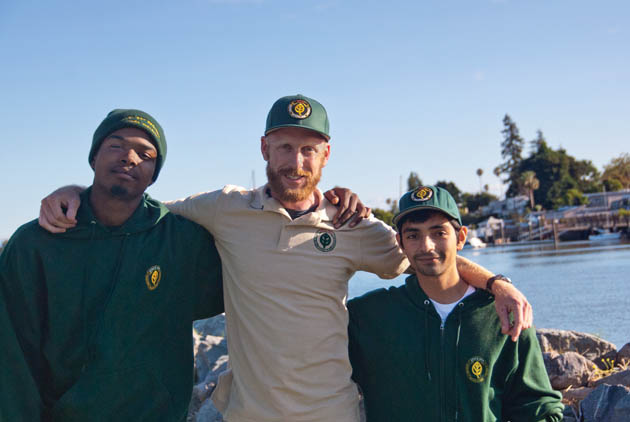
ngaging youth goes beyond the screen. Mendoza, who has worked with youth in Oakland, Hayward, Hunters Point, and Richmond, spends a great deal of time working to break down barriers to visiting the parks. Some young people in those neighborhoods don’t know about the parks because their parents don’t have the knowledge or time to introduce them, he says. Others fear parks as places where bodies are dumped by gangs, where people commit suicide, and where they’ll encounter wild animals. Many don’t have cars and aren’t familiar with how to take public transportation to the parks (if it’s available at all). For Mendoza and others, the impact of educating such kids about the positive aspects of the parks is twofold: People from all walks of life can reap the benefits of free outdoor spaces, and nature can benefit from more engaged visitors.
It is especially important to engage the communities that have been less active in open space issues but make up increasingly large shares of the population. About 86 percent of people in the Bay Area identified themselves as “white” in the 1970 census; by 2010, that number was down to 45 percent, while 23 percent identified as Latino, 21 percent identified as Asian, and 6 percent identified as African-American. By 2040, it’s expected that Latinos will make up the largest demographic segment, at 35 percent.
“If we don’t start engaging kids when they’re young, they’re not going to preserve, protect, and support the district—or the state parks, or the national parks—because they’re just not going to have a relationship with it,” Kassebaum says.
The district’s outreach efforts have led to a new generation of park staff, people like Jose Cabrera and Akin Lee, seasonal employees at the Martin Luther King Jr. Regional Shoreline, who reflect the increasing diversity of the East Bay.
On a clear summer afternoon, Cabrera and Lee are at the Tidewater Boating Center, where they’ve just finished up a full day of work as recreation leaders. Lee and Cabrera met three years ago through Teen Eco Action Week, a program that gives youth ages 13 to 17 the chance to participate in restoration projects and other activities throughout the parks. For both, that brush with the district turned into interest in the parks and, eventually, a job.
Lee was introduced to the outdoors by his family, who took him on regular camping and fishing trips. He spent some time in East Bay parks, but didn’t know anything about the district until Teen Eco Action Week. “Growing up in East Oakland, I’m so blessed to have this job,” he says. “Without it, I’d be working at KFC or somewhere else breathing in the smell of fast food all day. And if that were the case … I don’t know where I’d be.”
As part of the Teen Eco Action and the Teen Afterschool Outdoor Leadership teams, Lee leads canoeing, kayaking, biking, and fishing programs for day campers, teens, and the general public. “Basically I help out with all the programs here,” he says with a smile.
Some of his favorite moments come when he uses nature to help people come out of their shells—teaching them how to fish, for example, and seeing their faces light up with their first catch. “Usually the first day everyone is quiet,” he says of the Teen Eco Action Weeks he helps lead. “They mumble a word here and there. But by the end of the week everybody is laughing and enjoying each other. Nobody wants to leave.”
“He’s Mr. Reliable,” Philip Coffin, his supervisor, chimes in. Lee is currently a student at Merritt College and he’ll be juggling work and classes during the academic year. But Coffin says he thinks Lee will be with the district for a long while. Ask Lee if he sees a future in the EBRPD and he responds quickly, and with a big grin: “I hope so.”
Cabrera hails from East Oakland, too, though he lived in Michoacán, Mexico, before moving to the U.S. at age 8. Growing up here, he explored the city and went to parks on his own. Like many immigrant families just trying to get by, his didn’t have the time to spend with him outdoors. “When my dad gets home from work, I don’t think he has the energy to get out to the parks and pitch a tent,” Cabrera says. “My uncles and aunties are in the same position.” But he was encouraged to attend Teen Eco Action Week by a teacher who knew he liked the outdoors, and he later took part in an after-school program at the Tidewater Boating Center. He learned to kayak, tried archery, participated in trash cleanups, did trail maintenance, and learned how to get to the parks using public transportation. “I got hooked,” he says.
Though he currently attends Cal Poly San Luis Obispo as a computer science major and hopes to get a job related to his major upon graduating, Cabrera returned to the EBRPD to work during the summer. Though his major “doesn’t have a lot to do with nature,” he says, “I do like the idea of working with something park-related in the future.”
Cabrera, as part of the EBRPD’s Community Outreach Outdoor Programs team, leads overnight camping trips, among other things: “We’re really there to just make sure [all the campers] have a great time.”
Both Cabrera and Lee encounter people who aren’t accustomed to seeing people of color working as recreation leaders in the parks. Cabrera says, “People sometimes turn and look a little too long. Like, ‘When did they get here?’”
“I think people get used to seeing a white ranger dressed like Smokey the Bear and they have this idea of what a park staff person looks like,” Coffin says. “But the regional parks belong to everybody and it’s our legacy. The parks belong to Jose and Akin just as much as they belong to me.”

shley Elliott reaches into a glass tank. “Let me pull out our friend Tyler,” she says. “Ooh, he’s big,” a mother says, clearly wary. The group of kids in front of her is clamoring for a better view of Tyler, a gopher snake. The mother’s eyes grow enormous as Elliott brings Tyler closer to the crowd. The kids don’t seem to mind, though, and take turns reaching out to touch him. Others peer at a second terrarium, which houses Sydney, a female gopher snake currently taking a dip in her water dish.
Elliott and interpretive student aide Courtney Whiteside have set up a table under a blue E-Z-up in a parking lot at Black Diamond Mines Regional Preserve in Antioch to educate park-goers about local snakes. They have informational books and brochures, a dried-out skin that Sydney shed recently, fact cards, and laminated photos, including one of a snake extending its jaws around a rabbit, the back legs and fluffy tail dangling from its mouth. “Want to touch my snake?” Whiteside calls out. By the end of the day, Elliott and Whiteside have talked to 107 visitors about snakes, the park, and the district’s programs.
Black Diamond employees have been at the forefront of the district’s engagement challenge. “We work with youth more than any other [demographic] group,” says supervising naturalist Kate Collins. “Students and all kinds of youth groups come on field trips for mine tours. We also go to schools and libraries, anywhere there are people who might want to learn more.”
Collins spent 12 years working in national parks before coming to the ebrpd, including time in Alaska’s Denali National Park as an interpretive ranger and guide. Growing up in Southern California, Collins lived with “an urban canopy,” and today she hopes primarily to connect people with nature near where they live. She’s gone on long group trips in remote areas and “inevitably, when you’re about to turn around, people say, ‘It’s too bad I have to go back to the real world,’ meaning their homes in urban and suburban areas. It makes me sad that people feel they have to be so far from home to have an uplifting natural experience.”
Ashley Elliott grew up in Castro Valley and always loved nature, although as a kid she didn’t spend much time in the nearby East Bay Parks. “We were a beach family,” she says. An environmental studies major at UC Santa Cruz, she earned a master’s in environmental education, then worked at the Aquarium of the Bay and the California Coastal Commission. Her love for the ocean became a gateway to parks, which she became interested in during grad school in Seattle.
Elliott has been with the EBRPD as an interpretive naturalist for just over a year, focusing mostly on outreach at Black Diamond. She’s a natural teacher, the kind of person that both kids and adults can easily relate to, and she’s tech savvy, too. She posts “Throwback Thursday” historical photos, along with information about upcoming park programs and images of wildlife, to the EBRPD and Black Diamond Instagram pages. “We don’t have a social media department here at the park — though, I guess at Black Diamond, I’m it,” she says with a laugh. For the upcoming Teen Eco Action Week in Bay Point, she won’t allow the participants to use phones during the day, but she created a hashtag for them to use when posting photos at home after the program.
“There is a dichotomy between naturalists who like technology and naturalists who are wary of it,” Elliott says. “All of us understand the importance of it, but we get scared. You hear about kids spending eight hours a day staring at a screen, and we don’t want to encourage that. We want them to be out here. But at the same time, if that’s what they’re paying attention to … For me, it’s a teaching tool. Just like you use a microscope to look closely at something, you can use social media to connect with people.”
Recently Elliott has been thinking about how to educate people about climate change. She’s especially concerned about the shoreline parks, which could become inundated by the rising waters of San Francisco Bay. Hoping to teach visitors about changes going on in their parks and how they can be environmental stewards, she helped lead a training for interpretive staffers on incorporating climate change into their materials and programs. For example, some staff at Ardenwood Historic Farm in Fremont have begun talking to visitors and school kids about the environmental impacts of food production, which fits seamlessly into the park’s educational programs. “If you’re not familiar with how to talk to people about [climate change], it can seem daunting because it’s controversial,” she says. “But once you learn how to communicate about it, it becomes second nature.”
“It’s hard to find good, inspiring, useful information to talk about the impacts of climate change,” Collins says, adding, “[Ashley is] on the cutting edge of this and is helping bring us forward.”
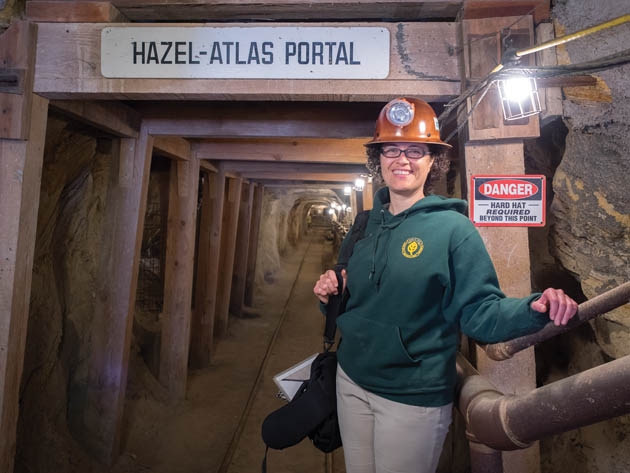
hen we first talked, Robert Doyle asked me a question: “Do you have a crystal ball?” No, I replied, though I wish I did. “I wish you did, too,” he laughed. “I would rent it.”
Doyle recognizes it won’t be his district in 2040, and that it’s the new staff members—college kids or recent graduates, part-timers like Doyle was in 1973 — who will be the ones to see those changes take hold and guide the district through them.
The EBRPD will need more staff to facilitate the growth in visitors, Huerta says, as well as funding to address aging infrastructure and for opening new parks. Elliott expects there will be more houses bordering the parks, which may be tougher on wildlife but will further acquaint and involve people with their neighboring open spaces. Cabrera hopes the parks will help ground our tech-fueled culture, and Lee sees future visitors from a variety of cultures coming together to enjoy what the parks have to offer. Employees such as Mendoza and Huerta are bringing their kids up in the district (“they get dirty and muddy like me,” Mendoza says of his two daughters, ages 8 and 9) and are thinking about how technology might promote better connection with the parks.
“I think [the younger generation of staffers] looks at things differently,” Doyle says. “They’re more willing to say, ‘What is my mark going to be and what am I going to do? I want to make my own mark.’ I think that’s a good thing.”
Lexi Pandell is an Oakland-based writer and researcher whose previous piece for Bay Nature chronicled spartina restoration in Bay Area wetlands. She’s written for Wired, the Atlantic, and the Bold Italic.

